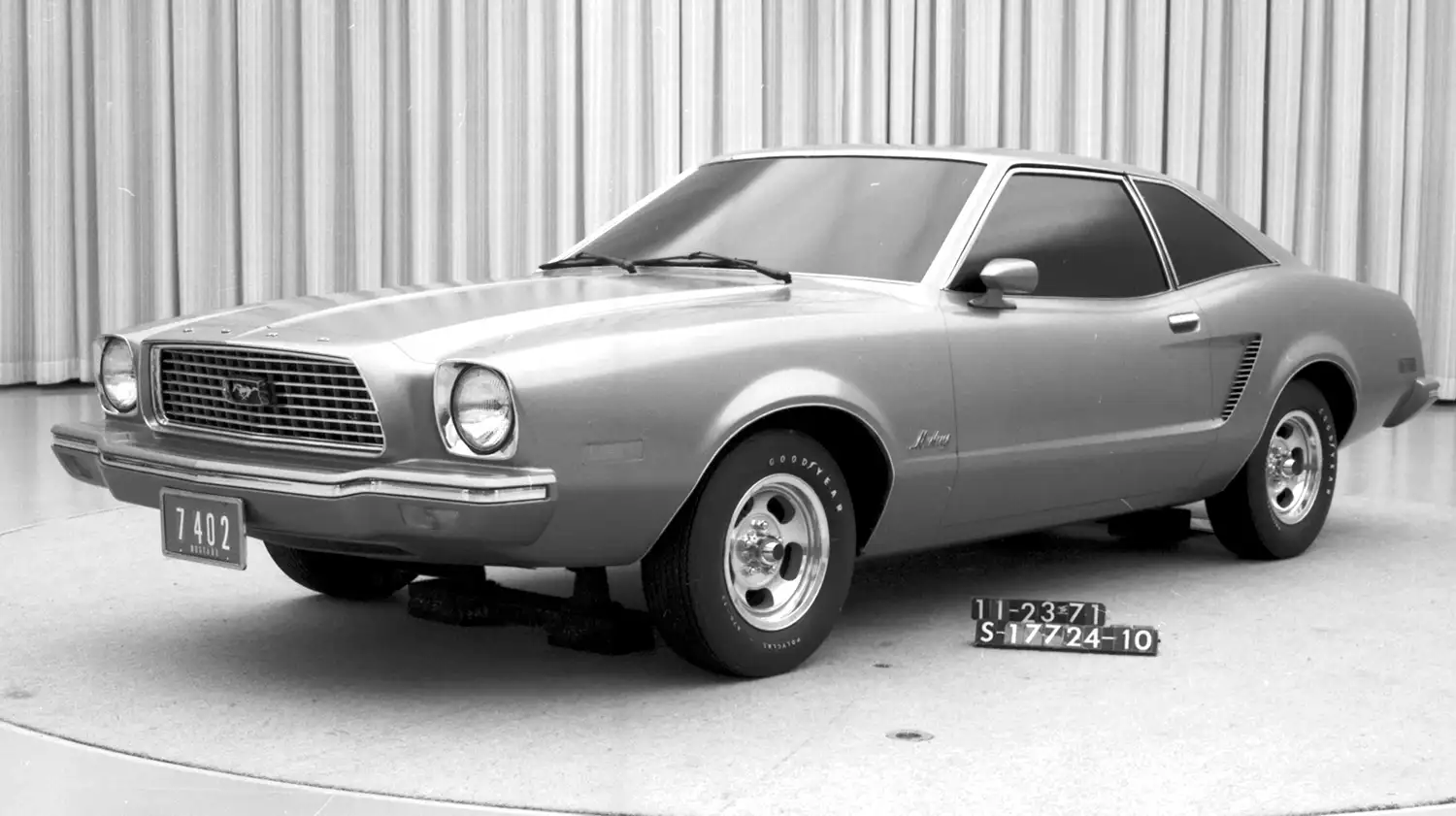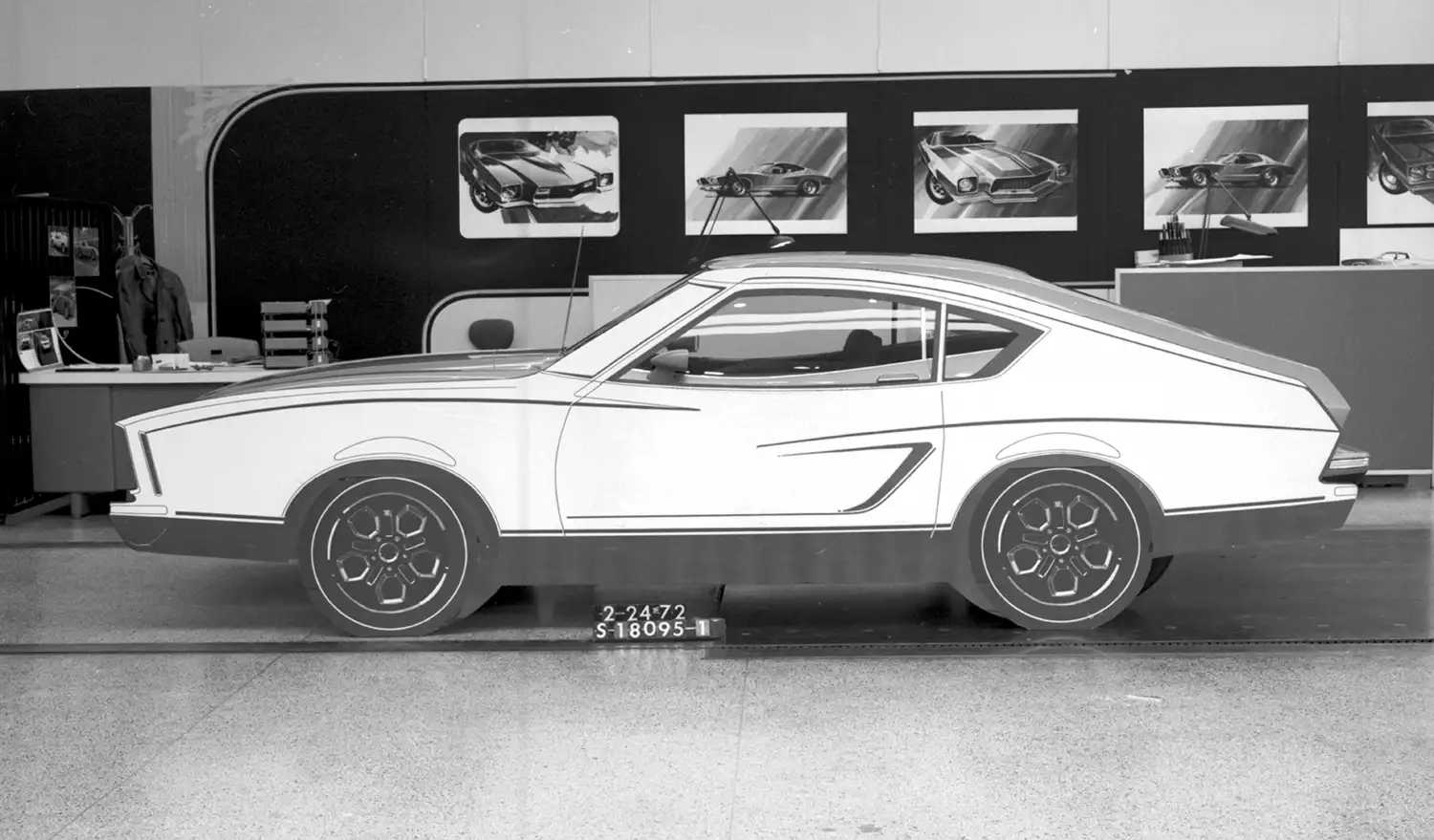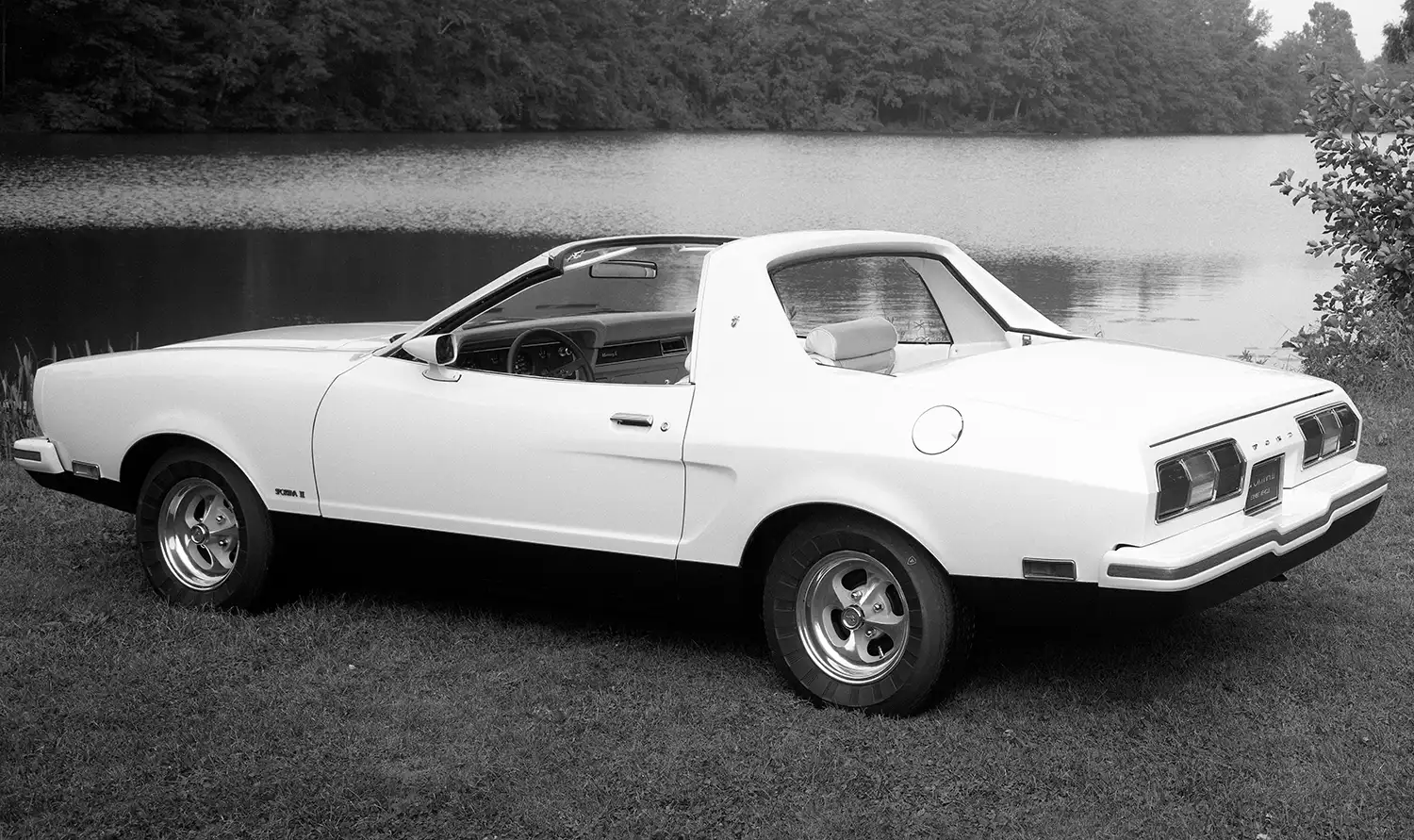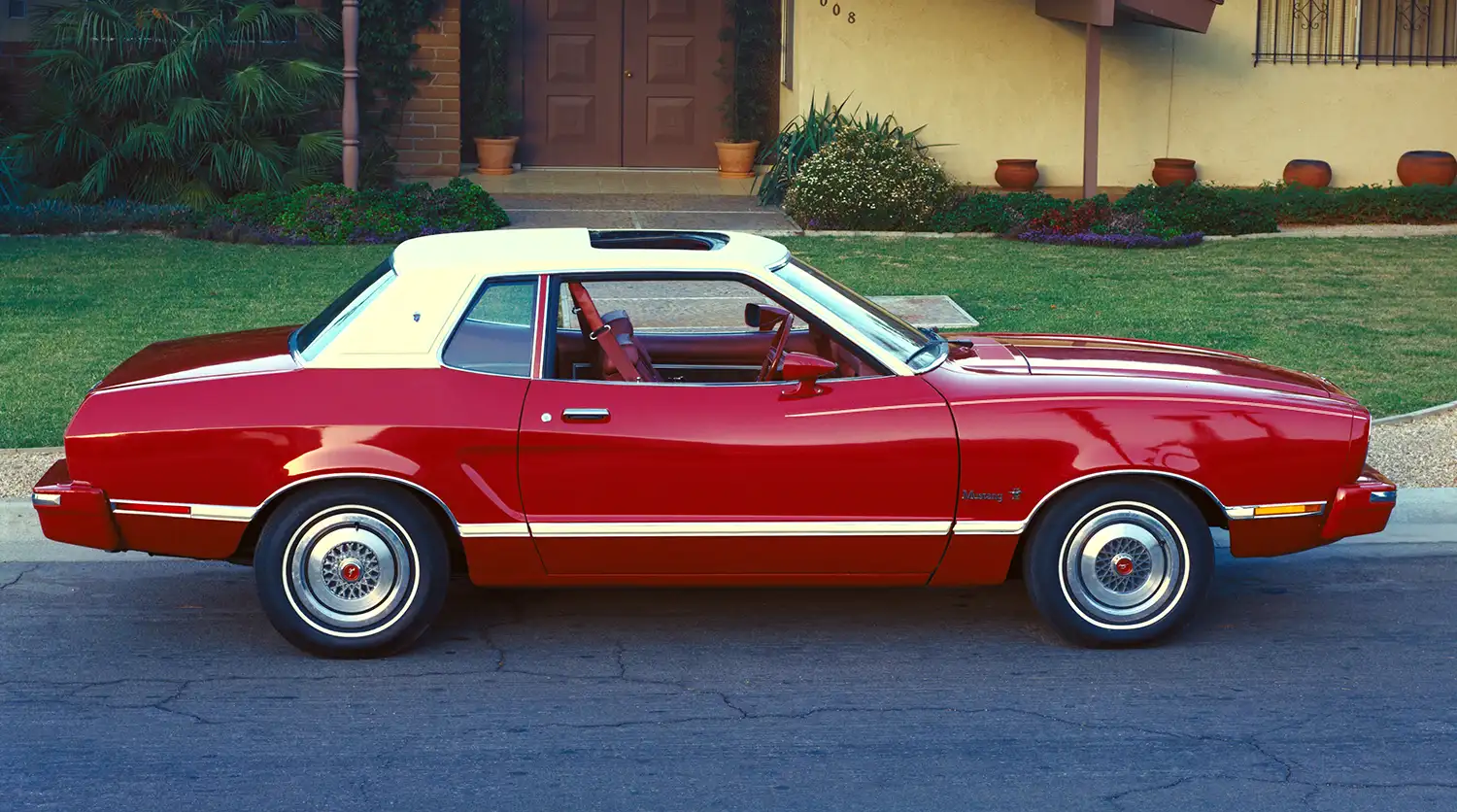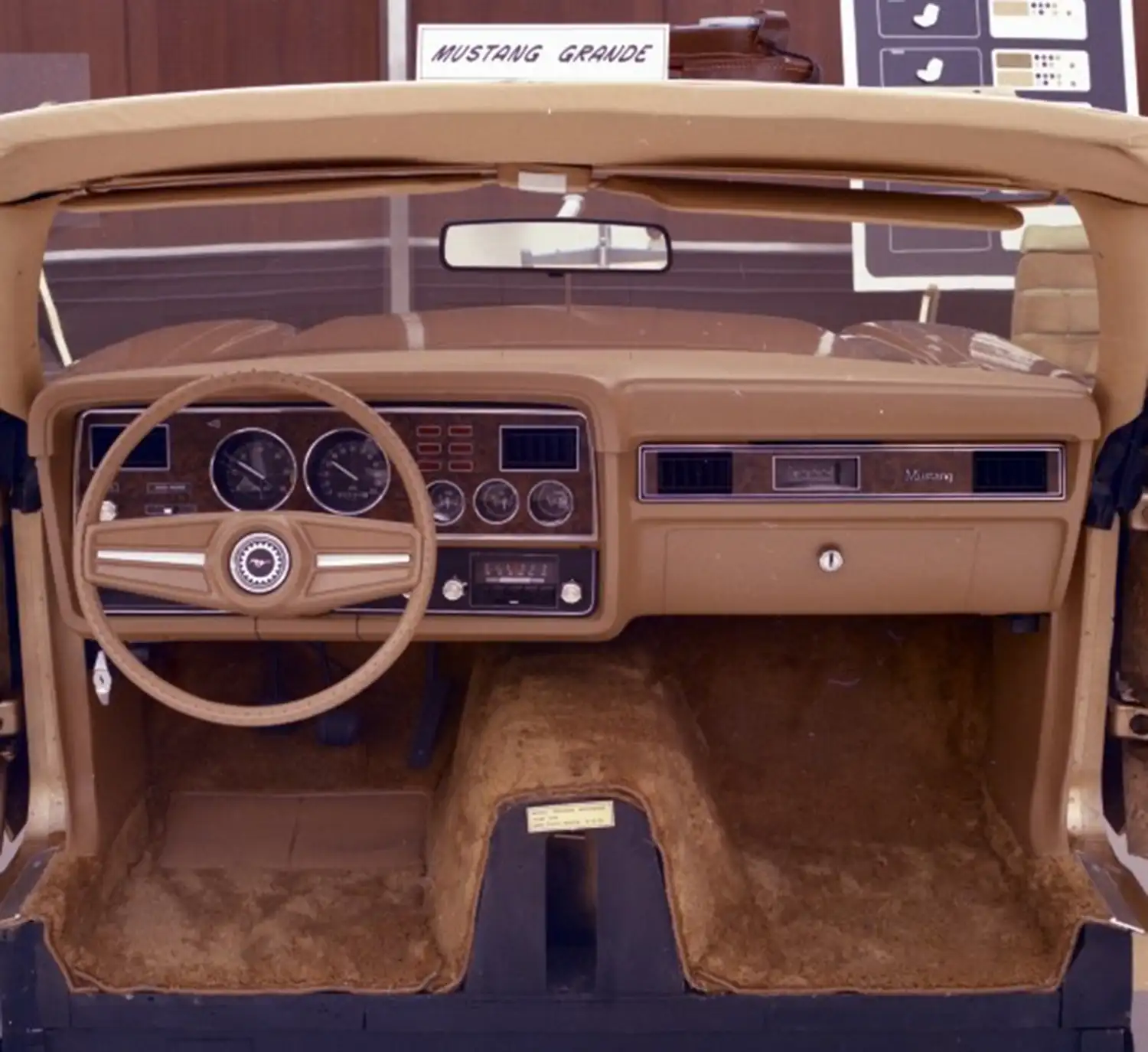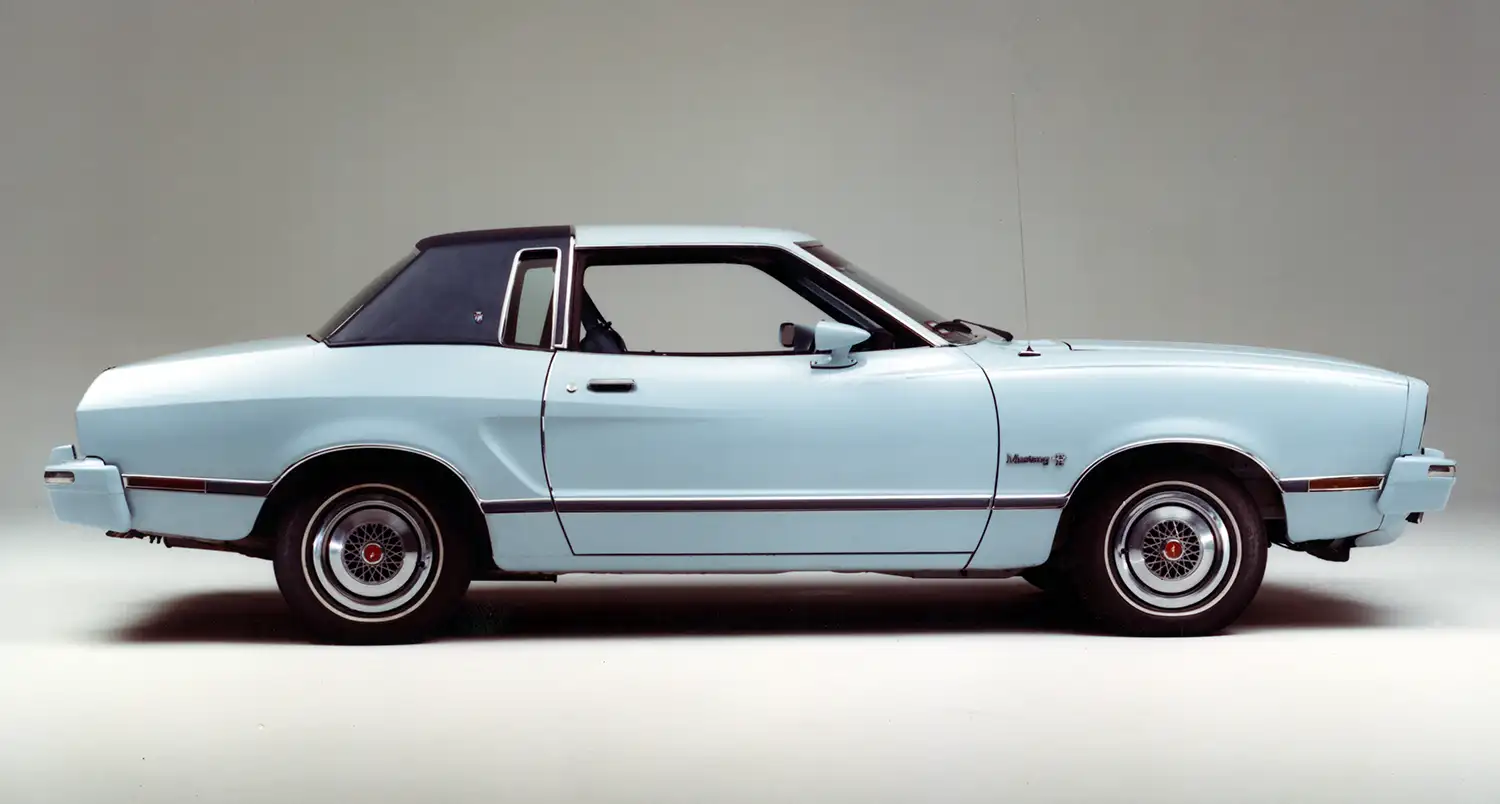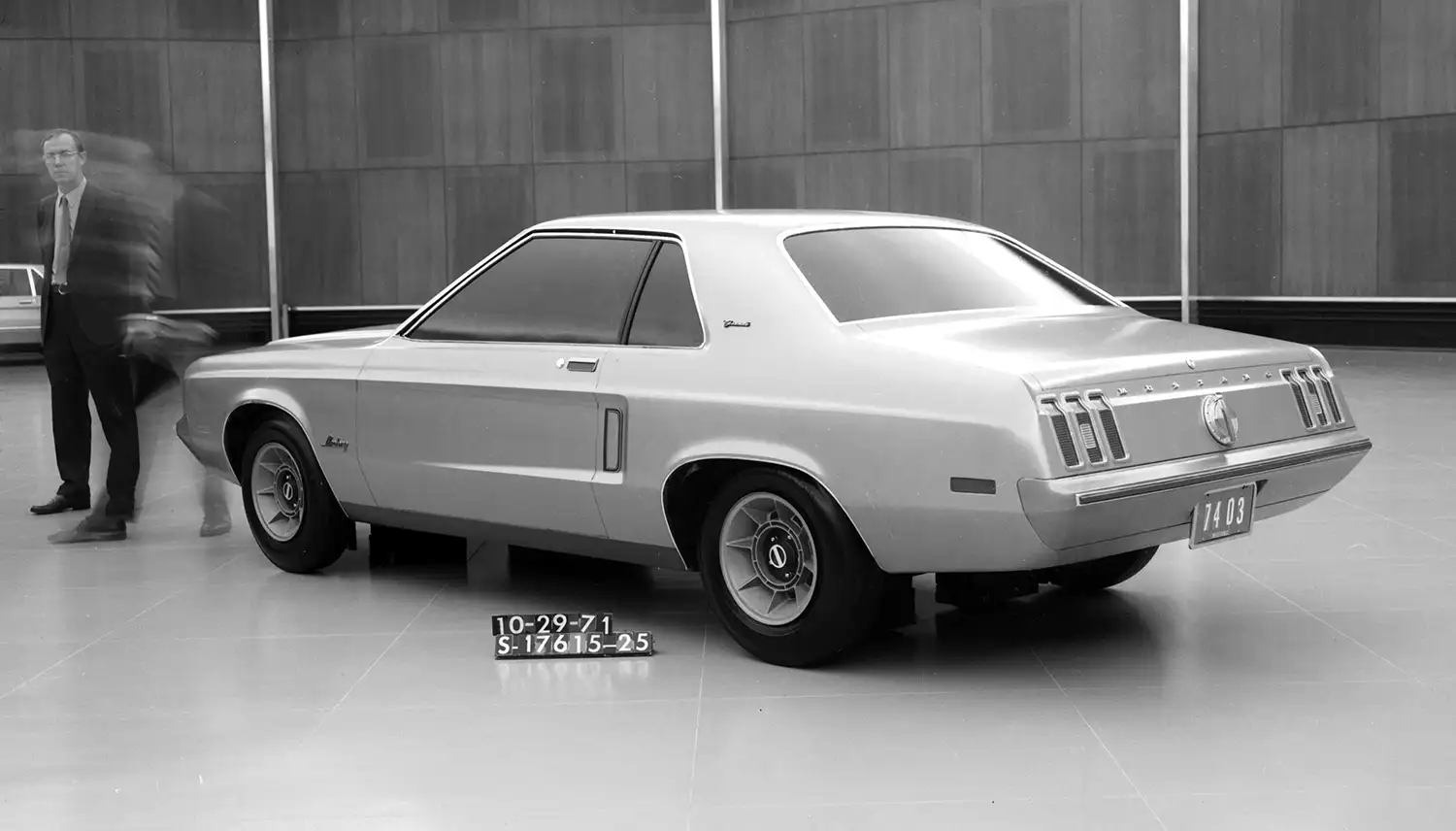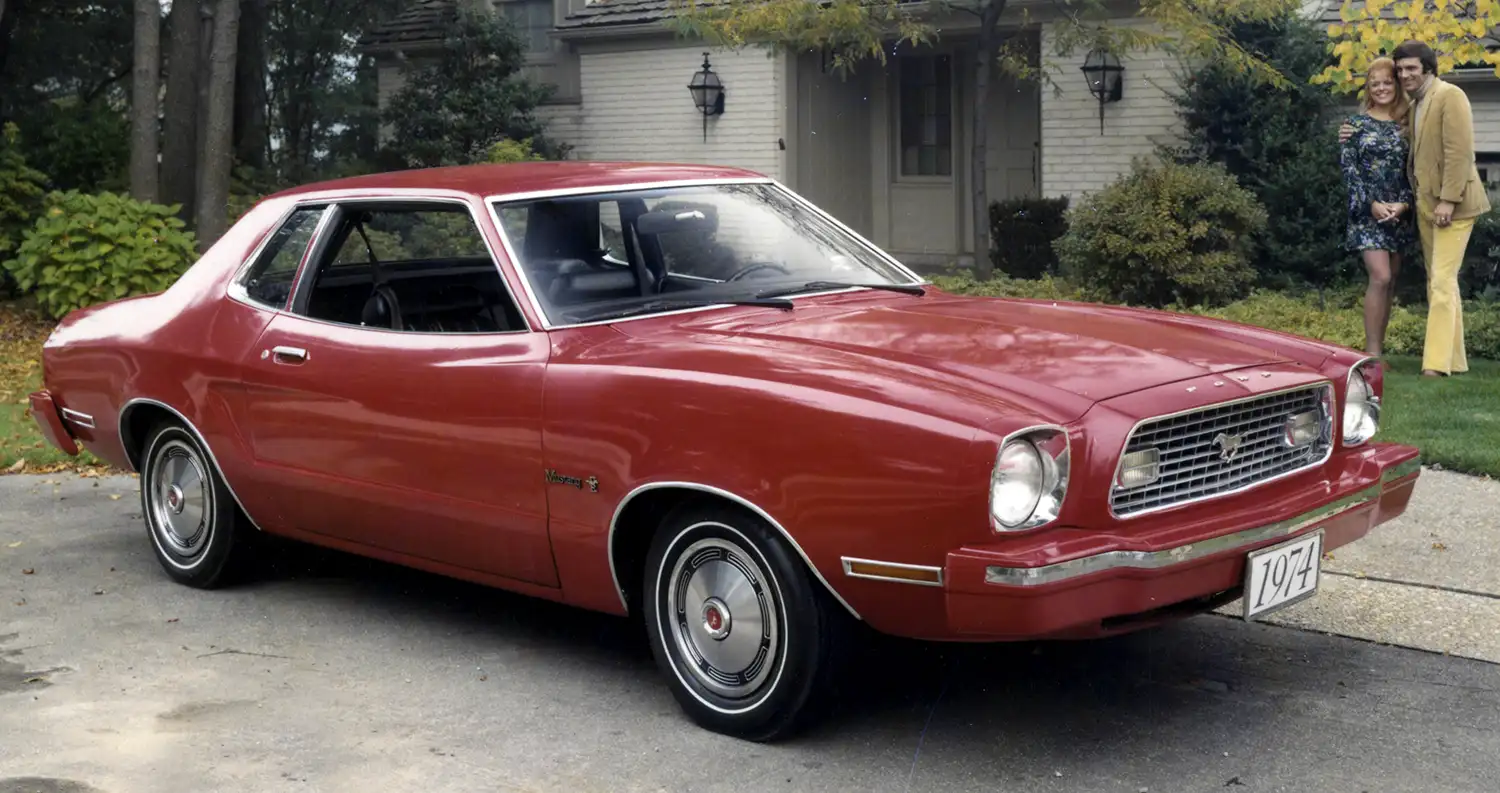
The 1974 introduction of the Mustang II earned Ford Motor Trend magazine’s Car of the Year honors again and actually returned the car to more than a semblance of its 1964 predecessor in size, shape, and overall styling. Though Iacocca insisted that the Mustang II be finished to quality standards unheard of in the American auto industry, the Mustang II suffered from being not only smaller than the original car, but heavier as well due to the federal emission and safety regulations and its build quality could be described as only “mediocre” – no better than other Ford or Detroit products of the day. Available as a hardtop or three-door hatchback, the new car’s base engine was a 2.3 L SOHC I4, the first fully metric engine built in the U.S. for installation in an American car. A 2.8 L V6 was the sole optional engine, meaning the popular V8 option would disappear for the first and only time in 1974, and Ford was swamped by buyer mail and criticized in the automotive press for it.
Since the car was never meant to have a V8, it became a mad scramble to reengineer the car in order to reinstate the 302 in³ (5.0 L) V8 option in time for the 1975 model year, but only in low-suds form with a two-barrel carburetor and 140 horsepower. Like the car that preceded it, the Mustang II had its roots in another compact, the Ford Pinto, though less so than the original car was based on the Falcon. The car sold well, with sales of more than 400,000 units its first year. It is also worth noting that four of the five years of the Mustang II are on the top-ten list of most-sold Mustangs. Despite innovations such as rack-and-pinion steering and a separate engine sub-frame that greatly decreased noise, vibration, and harshness, the Mustang II never caught the public’s fancy like the original had ten years prior.
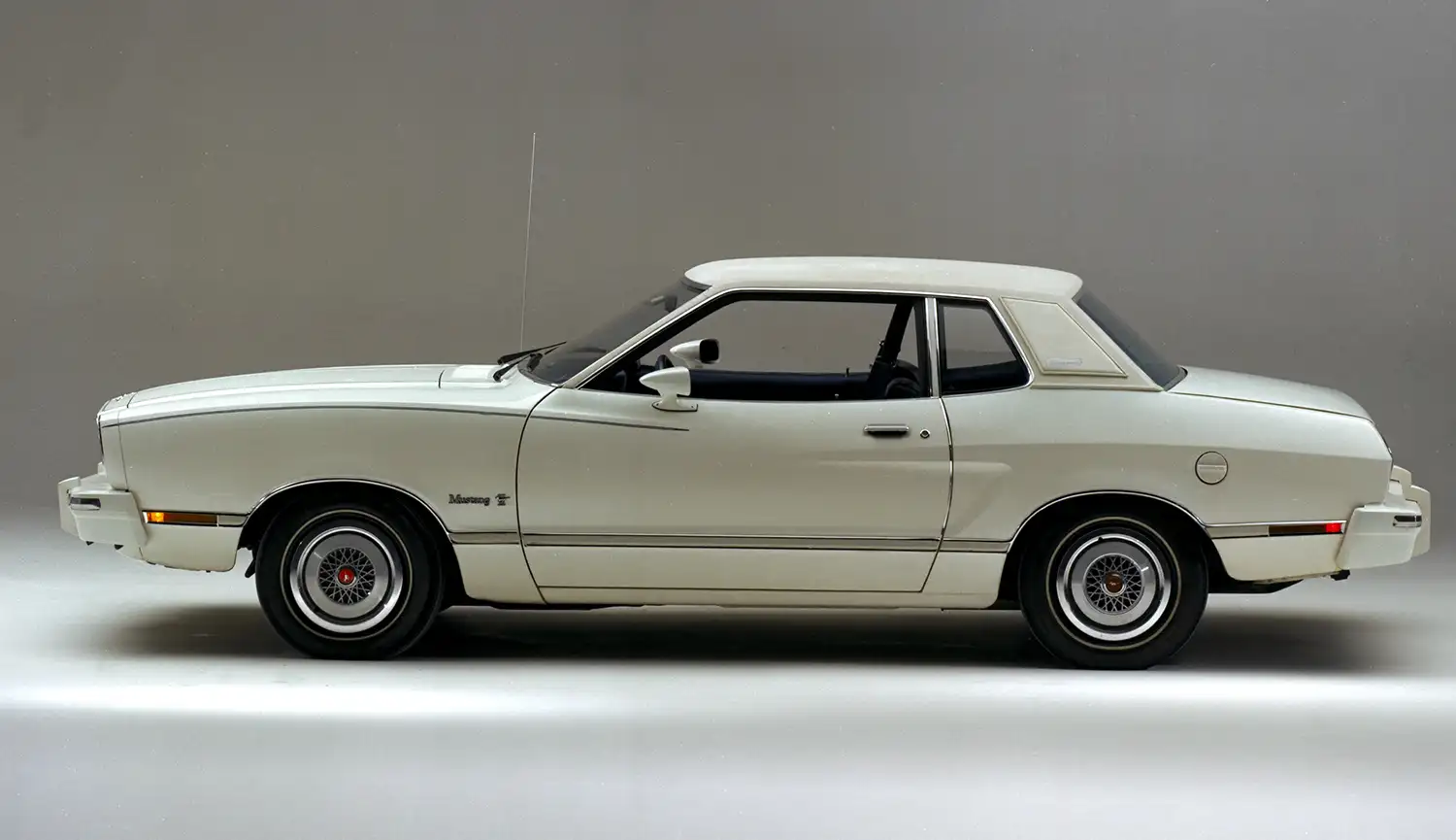
The Arab oil embargo, skyrocketing insurance rates, and aforementioned US emissions and safety standards that destroyed the straight-line performance of virtually every car of the period, certainly didn’t help. Chrysler ended production of the Barracuda and its stable mate, the Dodge Challenger, in 1974. Then GM nearly discontinued the Camaro and Firebird that same year. However, on the momentum of the Mustang II’s success, and under the direction of Ford’s new styling chief, Jack Telnack, a totally new Mustang hit the streets for 1979.
